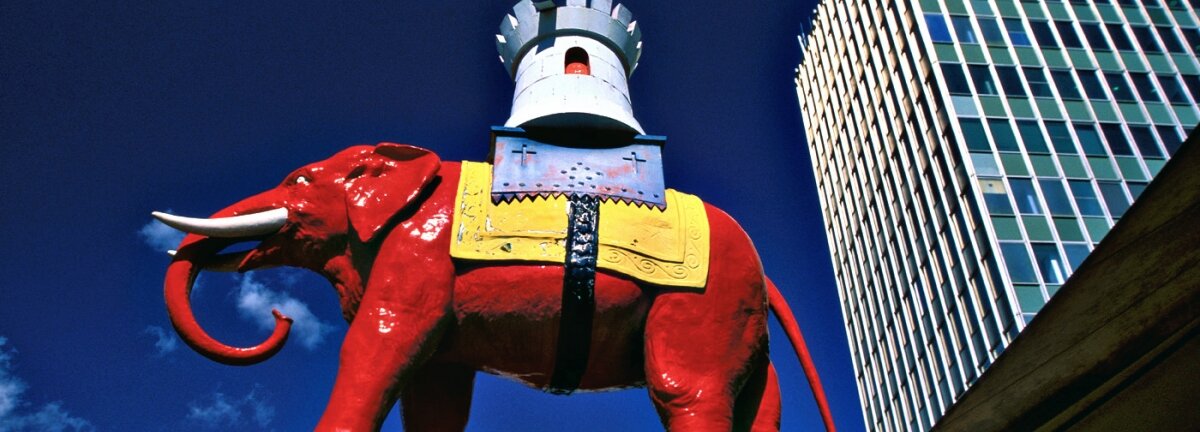In defence of… Elephant & Castle Shopping Centre

Despite the fact that it never became the icon of 60's Britain its developers hoped, Elephant & Castle Shopping Centre still holds a hidden beauty for those prepared to see it.
For most Londoners, the Elephant & Castle Shopping Centre is one of those places like Timbuktu - the chances that you would even think of going there are pretty minimal (unless you get lost in your car on the way to the Sussex beaches). The whole area is dominated by cars and buses, engine fumes, noise, two monstrous roundabouts, nasty pedestrian subway systems and equally unpleasant tower blocks. This is a place that rarely attracts benign words.
Yet I think the shopping centre is one of the most diverse and cosmopolitan places in London. It's not just the range of food from Asian to African to Latin American and Caribbean, or the glitzy phone case and faux-Louis-Vuitton-briefcase or even the huge and well loved bowling alley on the top floor that entertains me. It's all of it.
Entertainment is embedded into the very DNA of Elephant & Castle. Before the war, the area was famous for its splendid cinemas and music halls – one of which, the Trocadero, boasted the largest theatre organ in Europe! After being devastated during the wartime bombings, post-war plans were put into place to reconnect 'The Elephant' to its pre-war glamour days and the shopping centre was central to this grand plan.
The Elephant & Castle Shopping Centre was to become the radiant beacon of modern Britain, full of optimism and visionary zeal. Opened in 1965, it was one of the first American style indoor shopping malls in Europe, offering more than 100 shops on three levels, surrounded by a public plaza and incorporating the railway and tube stations. The original sales brochure illustrates just how optimistic they were.
The largest and most ambitious shopping venture ever to be embarked upon in London. In design planning and vision it represents an entirely new approach to retailing, setting standards for the sixties that will revolutionise shopping concepts throughout Britain.
Sales brochure, 1963
Well, some of those dreams didn't come true. The result was a more modest building, and the new shopping mall attracted fewer shoppers than expected. The location on a traffic island surrounded by torrential traffic certainly didn't help. Yet somewhere under the blue plastic cladding panels, and the urban silt that has accumulated around the building over the decades, you can still find the remainders of the ambitious original ideas.
The office tower is still there, soaring above the shopping paradise. Look at the façade detailing which, if clean and well-maintained, could be as stunning as SOM's Lever House in New York with its blue-green glass panels and fine steel mullions. The interiors are surprisingly light and airy with daylight penetrating deep into the building. I like the simple, almost elegant, straightforwardness of the layout.
However, fifty years after the conception, the future looks gloomy. The area around the shopping centre is undergoing major regeneration in a bid to shed Elephant & Castle of its unflattering reputation. The Heygate Estate next door is awaiting demolition while the next new tower is rising into the South London sky just opposite. The old Shopping Centre sits awkwardly in the middle of it all and looks out of place. Southwark Council now insists on full demolition of the existing building to make place for what is yet to come:
The creation of a new pedestrianised town centre, market square, 5,000 homes, up to 450,000 square feet of retail space, an integrated public transport hub, five green spaces.
Southwark Council, 2013
I can't help thinking that some of this sounds surprisingly similar to the 1963 sales brochure and I am intrigued to know whether there will be another sales brochure in 2063 perhaps, suggesting the provision of a first class public space and exciting new retail opportunities...
Subscribe to our newsletter
Want to keep up with the latest from the Design Council?
